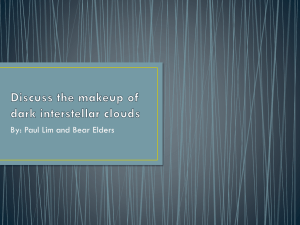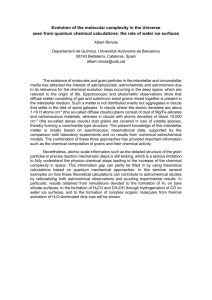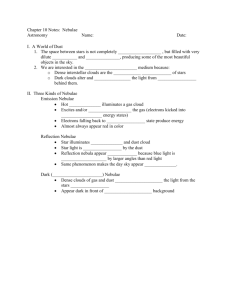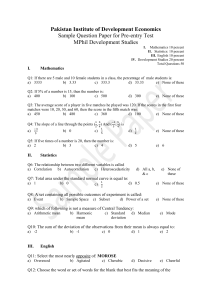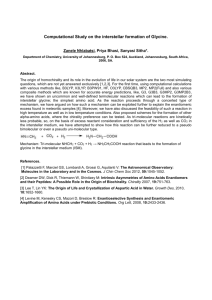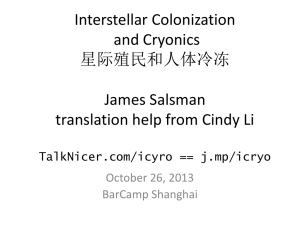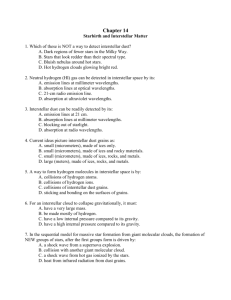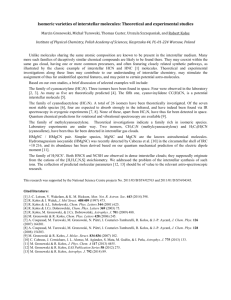Physics 306
advertisement
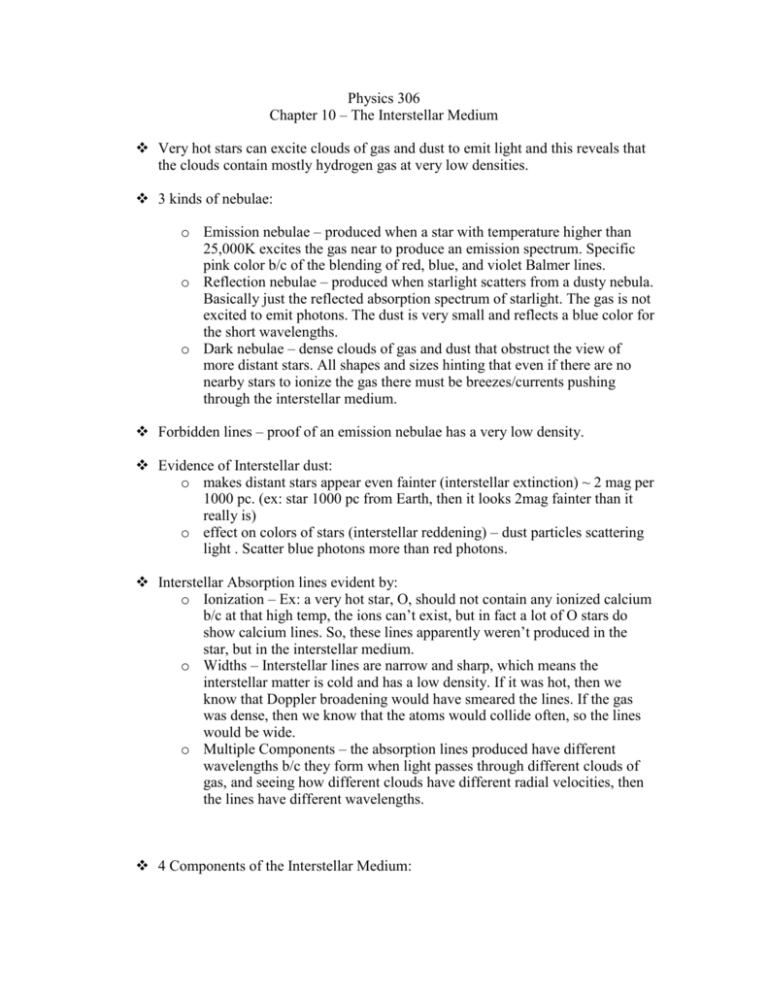
Physics 306 Chapter 10 – The Interstellar Medium Very hot stars can excite clouds of gas and dust to emit light and this reveals that the clouds contain mostly hydrogen gas at very low densities. 3 kinds of nebulae: o Emission nebulae – produced when a star with temperature higher than 25,000K excites the gas near to produce an emission spectrum. Specific pink color b/c of the blending of red, blue, and violet Balmer lines. o Reflection nebulae – produced when starlight scatters from a dusty nebula. Basically just the reflected absorption spectrum of starlight. The gas is not excited to emit photons. The dust is very small and reflects a blue color for the short wavelengths. o Dark nebulae – dense clouds of gas and dust that obstruct the view of more distant stars. All shapes and sizes hinting that even if there are no nearby stars to ionize the gas there must be breezes/currents pushing through the interstellar medium. Forbidden lines – proof of an emission nebulae has a very low density. Evidence of Interstellar dust: o makes distant stars appear even fainter (interstellar extinction) ~ 2 mag per 1000 pc. (ex: star 1000 pc from Earth, then it looks 2mag fainter than it really is) o effect on colors of stars (interstellar reddening) – dust particles scattering light . Scatter blue photons more than red photons. Interstellar Absorption lines evident by: o Ionization – Ex: a very hot star, O, should not contain any ionized calcium b/c at that high temp, the ions can’t exist, but in fact a lot of O stars do show calcium lines. So, these lines apparently weren’t produced in the star, but in the interstellar medium. o Widths – Interstellar lines are narrow and sharp, which means the interstellar matter is cold and has a low density. If it was hot, then we know that Doppler broadening would have smeared the lines. If the gas was dense, then we know that the atoms would collide often, so the lines would be wide. o Multiple Components – the absorption lines produced have different wavelengths b/c they form when light passes through different clouds of gas, and seeing how different clouds have different radial velocities, then the lines have different wavelengths. 4 Components of the Interstellar Medium: o HI clouds – clouds of neutral gas, 50-150 pc in diameter, few solar masses, 100K temp (low), 10- few hundred atom/cubic cm (high density) not ionized! *make up about 25% of interstellar mass o Intercloud medium – few thousand K, .1 atom/cubic cm (low density), IONIZED hydrogen (HII), in approx. equilibrium with HI clouds so relatively same pressure. *make up about 50% of interstellar mass o Molecular clouds – very dense, 60 pc in diameter, few million solar masses, very cold. *makes up about 25% of interstellar mass o Coronal gas – million degrees K (very hot), low density; thought to form by supernovae exploding. *makes up about 5% of interstellar mass Wavelength Observations: o 21 cm observations – can map the distribution of neutral hydrogen (HI) not ionized hydrogen b/c it lacks an electron and can’t emit 21 cm radiation. o Radio observations – important molecules (CO, OH) that can be detected with radio energy. Molecules can’t exist outside dense clouds. This shows that if we can detect these molecules then the molecular clouds are dense. o Infrared Radiation – The interstellar dust is very cold, but it has a large surface area which gives off a lot of infrared radiation. o X rays – come from high temp area which is the coronal gas. Remember probably caused from exploding supernovae or gas flowing away from hot stars. o UV Observations – reveal that while some parts of interstellar medium are cold and empty, some are hot. (ex: sun lies in hot regions with ionized hydrogen, but down a few light yrs lies a cool neutral hydrogen cloud) Interstellar Cycle o Star group forms, hottest stars begin ionizing gas to produce emission nebulae o Pressure of starlight and gas flowing away from the star push the gas outward into the cloud o Interstellar dust formed in the atmosphere of cool stars (low temps so atoms can condense into solid matter) o Pressure of starlight pushes dust out of the stars’ atmosphere and into the interstellar medium to be replenished. (exploding supernovae add to the interstellar medium as well) o Interstellar gas and dust continue to build and form massive clouds o Dust protects the interior of the cloud from uv photons, so molecules can form o Giant molecular clouds are formed and giving birth to new stars
